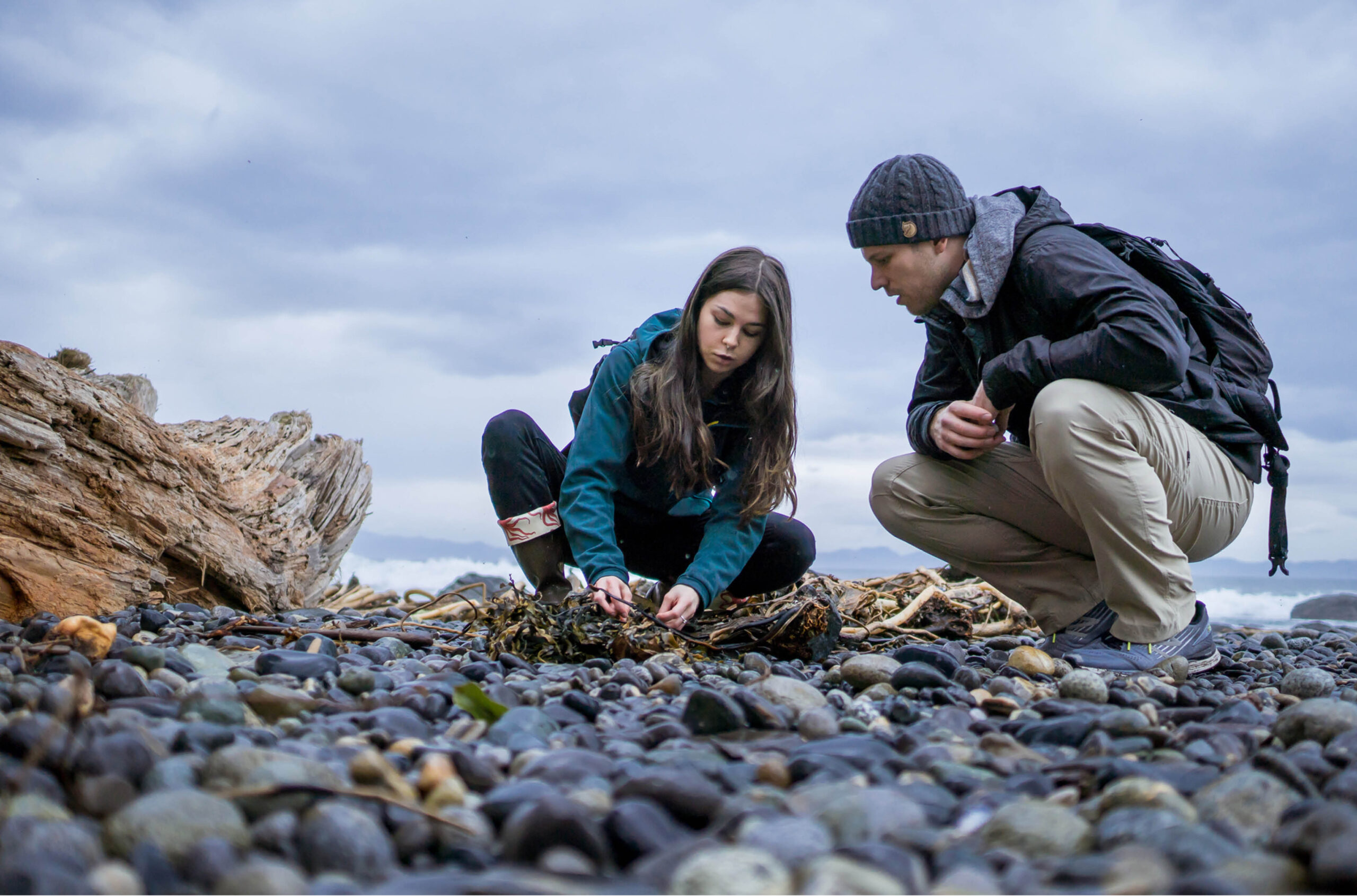Reimagining mobility for a carbon-constrained world
Without community buy-in, universities will not be able to make any progress in lowering their carbon emissions.

Universities are well-positioned to help combat the climate crisis. They are centres of research on climate adaptation and mitigation across various disciplines. And as institutes of higher learning, they shape the perspective of the next generation on this existential challenge. At the same time, universities have their own carbon footprints – campuses operate like small cities, consuming energy, requiring transportation and creating waste – which results in greenhouse gas emissions.
Canadian universities have made various pledges to reduce operational emissions and achieve “net-zero” at some future dates. The priority of many universities is to reduce emissions from direct energy sources — for example, by switching away from gas plants that heat and cool buildings to more sustainable forms of energy, such as geothermal. These direct emissions are the logical place to start as this is something university administrators have control over, although switching often requires costly upfront investments.
However, up to two-thirds of the greenhouse gas emissions of a campus stem from indirect emissions throughout the supply chain of a university, involving many stakeholders beyond the university’s direct control. Upstream, this includes procured goods and services but also employees commuting to campus. Downstream, it extends from waste generated in operations to investments made by the university in pension funds.
Many universities struggle to account for and reduce these indirect emissions. Insufficient access to data and a lack of agreed methodologies to measure emissions are major roadblocks. Consequently, the commitments to “net-zero” often – and sometimes quietly – omit those indirect emissions, while less than 40 per cent of Canadian universities even track them.
How can universities meaningful address indirect emissions in their supply chains, knowing that they lack direct control over the behavior of suppliers or commuters to campus? In a recent research project at York University, funded by a Provostial Fellowship, I had the opportunity to engage with this question as it applies to emissions from commuting and business (air) travel; in short, mobility emissions.
The timing was favorable as York was undertaking a comprehensive inventory of its carbon emissions, including indirect emissions, an ambitious project.
This allowed me and my team to work with recent and fine-grained data on emissions stemming from mobility. In addition, York conducted an extensive transportation survey, which yielded important insights about post-pandemic commuting and business travel patterns and preferences of community members. With that, York laid the foundation for an evidence-based climate strategy in transportation by measuring the university’s carbon emissions and surveying community members about their practices and views.
It is one thing to have compelling data. My team and I showed that commuting and business travel (mostly air travel) accounted for over 20 per cent of all emissions, and for close to 40 per cent of all indirect emissions, a sizeable proportion. And, concerningly, mobility emissions were increasing in excess of university growth. We also knew by which factor emissions could be reduced if, for example, a certain number of single-occupancy vehicle drivers would make the switch to public transit or opt for carpooling. It is quite a challenge, however, to get employees, faculty and students to change their behaviour.
A crucial first step is to avoid getting trapped in zero-sum notions of “reducing carbon emissions takes away mobility.” To be sure, trade-offs between competing goals are part of any strategy. Every dollar spent on carbon reduction is a dollar not available for other priorities. But by reimagining mobility, we can identify new options (including win-wins) and empower action, based on clear principles and priorities. In my project, I highlighted three key messages:
Make every trip worthwhile
First, this is not about reducing mobility but mitigating the carbon impact of mobility. Yes, mobility is essential to the mission of the university, allowing us to come together to exchange ideas and generate knowledge. Let’s just be smart about which trips generate value, relative to the cost, time and carbon emissions spent. The post-pandemic environment has opened many more options to combine remote and in-person teaching, research and work. It offers a unique window of opportunity to reimagine long-held mobility practices and reap win-wins for delivering on the university’s mission and on carbon reductions.
For example, do we need to ask students to commute every week to mass lectures with little interaction, rather than inviting them in smaller groups for interactive sessions every two or three weeks? Blended program delivery reduces commuting emissions and, if done right, could enhance the quality of the student experience. For example, reducing long and stressful commutes (according to my research the average commute time at York is 40 to 60 minutes one way!) can improve student well-being, affordability, and (often) accessibility and inclusion.
Let us interrogate the research value of a long-haul flight to deliver a one-hour keynote address. Keynote speakers tend to be well-networked already. Switching the keynote to online delivery may not harm exchange of ideas but perhaps even increase the researcher’s productivity by avoiding a lengthy trip. Do we need to fly in the external examiner for graduate thesis defences? Or, should we not allow the examiner to join virtually, as the faculty of graduate studies at York has decided recently?
Finally, hybrid work arrangements reduce commuting emissions and, if done right, enhance staff productivity, recruitment and retention, subject, of course, to productive labour relations and equitable treatment. Operational needs – not entrenched practices – should guide an assessment of which functions and tasks can be completed online and which require in-person delivery.
No need to reinvent the wheel
The second message is that there is plenty of experience and knowledge available from trailblazing universities globally. A key component of my research project was to scan for advanced practices at comparable universities that York could learn from or emulate; for example, a universal transit pass for students, which reliably incentivizes students to switch from driving to taking transit. Not offering this incentive to students makes York an outlier among comparable universities. This adds credibility to a recommendation.
Applying the Avoid-Shift-Improve framework
The third message is that action requires strategic choices and priority-setting. Naturally, the university academic plan provides some guidance, like aligning actions with the UN Sustainable Development Goals, as York has done. However, to manage mobility emissions from the user perspective, we needed a more practical approach, which I found in the avoid-shift-improve framework that originated in transportation management in Germany and has evolved into a broader demand-side approach to environmental sustainability.
This framework offers a clear hierarchy of action. The first line of action is to avoid environmentally harmful, carbon-intensive activities, to the extent feasible. For example, holding the editorial board meeting of an academic journal remotely avoids carbon-heavy air travel. If Avoid is not an option, Shift to a less carbon-intensive form of travel. Take ground transportation instead of air travel. Or, shift from driving to taking public transit to get to campus. If Shift is not feasible for a user, try to Improve the carbon impact of travel by replacing your gasoline-powered vehicle with an electric one.
Only once these three steps have been exhausted should we even consider the deceptively simple, convenient fix of “offsetting” emissions, where individuals or universities pay to have emissions offset elsewhere. Questions about the integrity and effectiveness of offset projects abound, like whether tree planting is genuinely comparable. The most (and some would argue only) credible offsetting measures would be those that universities control themselves: offsetting fees collected from commuters and travellers should be invested in local projects on campus that demonstrably remove equivalent carbon emissions.
With this framework in hand, where to start? Begin with low-hanging fruits; actions where costs and barriers to implementation are low and you can move quickly. Create a climate action dashboard to report carbon inventory results by operational area and to track progress over time. Launch a sustainable travel guide and engage the community, especially students, with gamification (carbon tracker, trip planner, games with prizes). Launch a ride-sharing app exclusive to the community to enhance the appeal of car-pooling to campus.
The first step for business travel is to embed carbon guidance and management features in the travel booking software and require university travel to be booked on this site, guiding users with nudges and default options towards more sustainable choices.
In the medium-term, proceed with more complex projects, such as a universal transit pass for students, which require consultation with students and negotiation with transit agencies. If some users consider driving to campus unavoidable and do not shift away from or improve (electrify) their drive, consider as a last resort offset fees for parking permit holders – but commit to reinvest the proceeds in credible offset projects on campus. The same logic could apply to unavoidable air travel – but again, consider it a last resort, not a quick fix. And, finally, develop visions for the long-term, such as eliminating parking permits altogether (allowing only single, per-use permits) and repurposing parking lots for a more productive use such as student housing.
Change also needs to be supported at the institutional level. Universities can set policies and guidelines to facilitate and promote blended course delivery or hybrid work. They need to invest in major initiatives that drive decarbonization. Just as universities invest in low-carbon technologies to heat and cool their buildings, they need to invest in low-carbon approaches to meet mobility needs: make public transit commuting more affordable and seamless; or invest in pedagogical innovation and program redesign as well as IT infrastructure to make blended learning (leading to reduced commuting) an improvement of student experience.
Tap into the endless creativity and passion for change among your students
I learned this lesson: use your students. For example, a group of York students actually developed a ride-sharing app and turned it into a business proposal in one of my sustainability courses!
It all begins with creating awareness and engaging the community. I was confident that I had good data and compelling, evidence-based recommendations to put forward. But I needed to find engaging and fun ways to communicate my findings to the wider community; something that would resonate and work as a call to action to all community members. I decided to partner with an illustrator specializing in animated videos on sustainability. Hopefully, the video inspires community members to be mindful of the mobility choices they make and re-examine their habits.
My research project is a small step. Without community buy-in we will not make progress. Combined with solid research, sound strategy and the university’s commitment to act it could be the beginning of something bigger as we reimagine mobility for a carbon-constrained world.
Burkard Eberlein is a professor of public policy and sustainability in the Schulich School of Business at York University.
Featured Jobs
- Engineering - Assistant or Associate Professor (Robotics & AI)University of Alberta
- Sociology - Tenure-Track Position (Crime and Community)Brandon University
- Medicine - Associate or Full Professor Professor (Kidney Health)Université de Montréal
- Architecture - Assistant Professor (environmental humanities and design)McGill University
- Finance - Faculty PositionUniversity of Alberta














Post a comment
University Affairs moderates all comments according to the following guidelines. If approved, comments generally appear within one business day. We may republish particularly insightful remarks in our print edition or elsewhere.